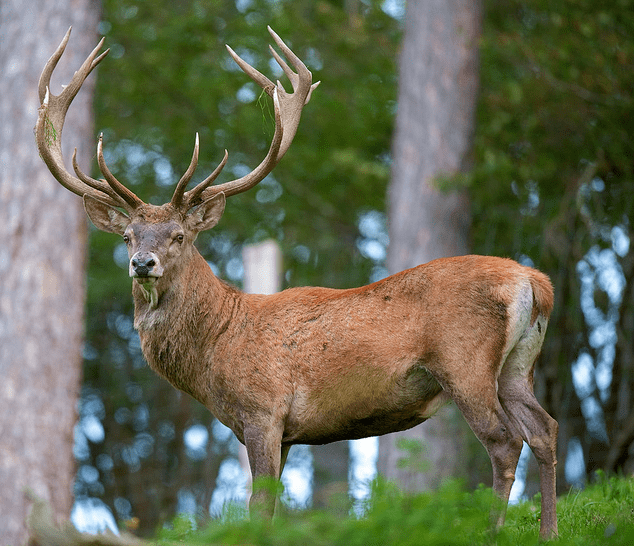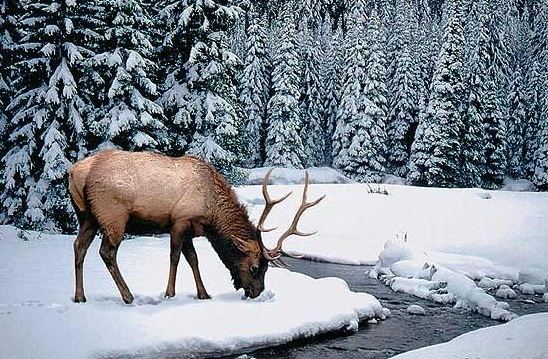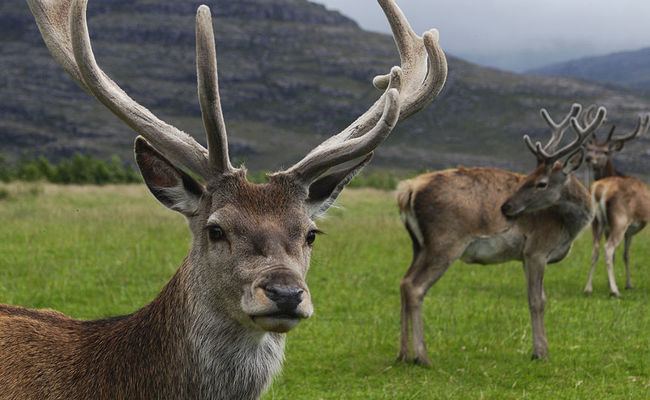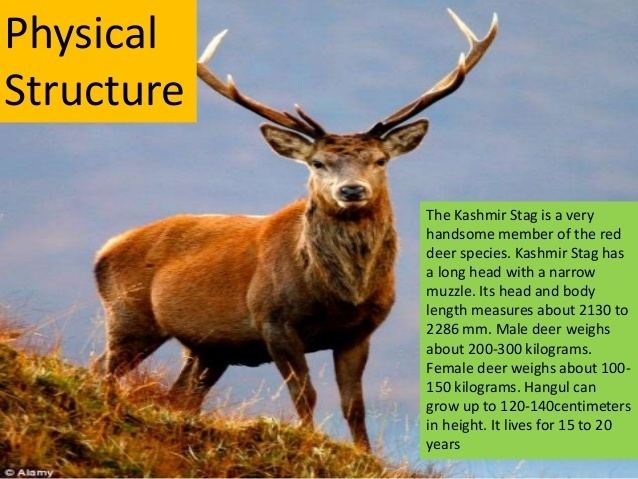Rank Subspecies | Genus Cervus Higher classification Red deer | |
 | ||
Similar Deer, Red deer, Cervus, Mammal, Bactrian deer | ||
Hangul the kashmir stag will soon become extinct
The Kashmir stag (Cervus canadensis hanglu), also called hangul, is a subspecies of elk native to India. It is found in dense riverine forests in the high valleys and mountains of the Kashmir Valley and northern Chamba district in Himachal Pradesh. In Kashmir, it's found in the Dachigam National Park where it receives protection but elsewhere it is more at risk. In the 1940s, the population was between 3000 and 5000 individuals, but since then habitat destruction, over-grazing by domestic livestock and poaching have greatly reduced that dramatically. Earlier believed to be a subspecies of red deer (Cervus elaphus), a number of mitochondrial DNA genetic studies have revealed that the hangul is part of the Asian clade of the elk (Cervus canadensis) and has not been evaluated by the IUCN.
Contents
- Hangul the kashmir stag will soon become extinct
- Description
- Distribution and ecology
- Threats and conservation
- References

Description

This deer has a light rump patch without including the tail. Its coat color is brown with a speckling to the hairs. The inner sides of the buttocks are greyish white, followed by a line on the inner sides of the thighs and black on the upper side of the tail. Each antler consists of five tines. The beam is strongly curved inward, while the brow and bez tines are usually close together and above the burr.
Distribution and ecology

This deer lives in groups of two to 18 individuals in dense riverine forests, high valleys, and mountains of the Kashmir valley and northern Chamba in Himachal Pradesh. In Kashmir, it's found in the Dachigam National Park (at elevations of 3,035 meters), Rajparian Wildlife Sanctuary, Overa Aru, Sind Valley, and in the forests of Kishtwar & Bhaderwah.
Threats and conservation

These deer once numbered from about 5,000 animals in the beginning of the 20th century. Unfortunately, they were threatened, due to habitat destruction, over-grazing by domestic livestock, and poaching. This dwindled to as low as 150 animals by 1970. However, the state of Jammu & Kashmir, along with the IUCN and the WWF prepared a project for the protection of these animals. It became known as Project Hangul. This brought great results and the population increased to over 340 by 1980.

Much of the earlier published material was by the distinguished E. P. Gee, a member of the Bombay Natural History Society. Shortly before the expedition was mounted, Fiona Guinness and Tim Clutton-Brock, both noted deer experts, had visited Kashmir and had gathered some useful field data, which confirmed that Hangul numbers were at a dangerously low level.

The animal is battling for its survival in its last bastion: they are now scattered within 141 km² of the Dachigam National Park located on foothills of Zabarwan range on the outskirts of Srinagar. Known for its magnificent antlers with 11 to 16 points, hangul was once distributed widely in the mountains of Kashmir. During the 1940s, their number was believed to be about 3,000-5,000. As per the latest census in 2008, only around 160 exist. There are plans to breed them in captivity to increase their chances of survival.
